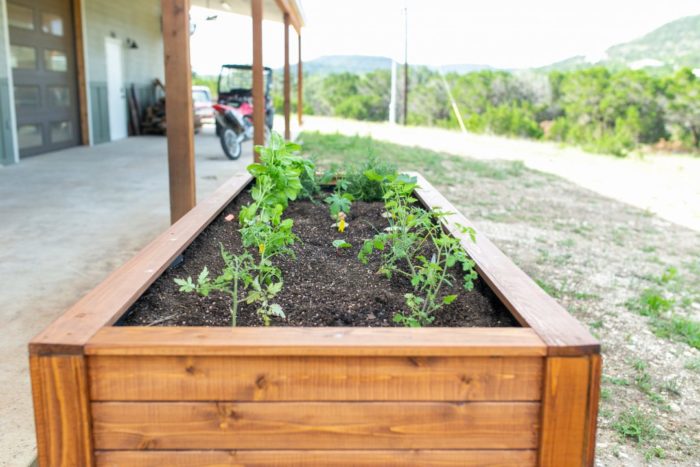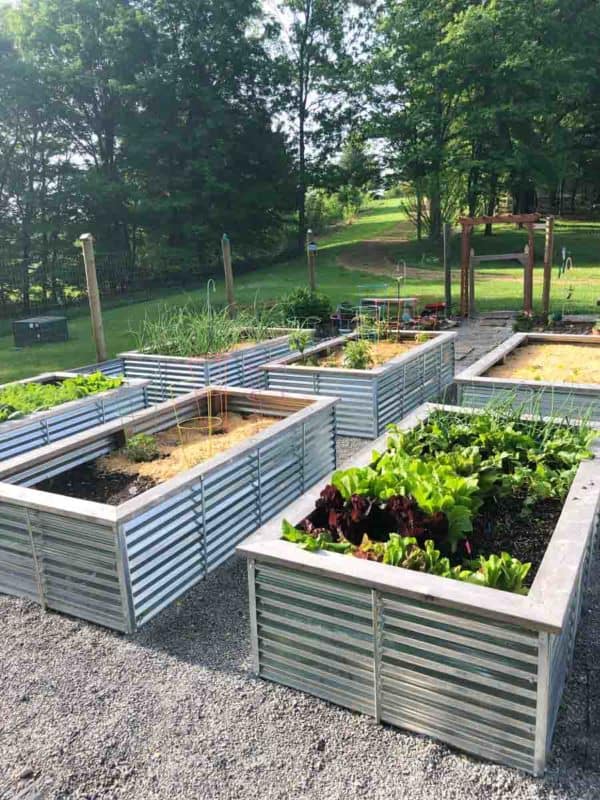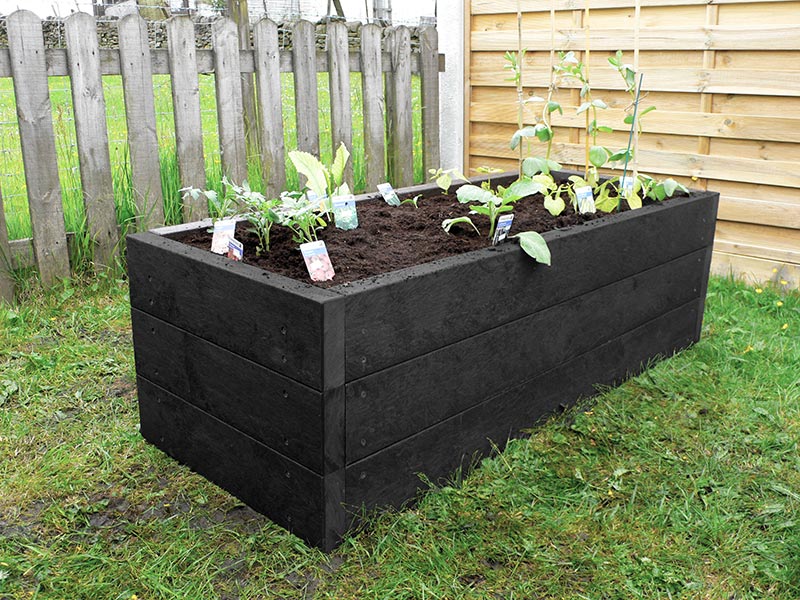How To Build Longlasting Raised Garden Beds That Will
How to Build Long-Lasting Raised Garden Beds That Will
Raised garden beds are a great way to improve your gardening experience. They can help you grow healthier plants, reduce pests and diseases, and make gardening easier on your back. But if you want your raised beds to last for many years, it's important to build them right.
In this blog post, I'll show you how to build long-lasting raised garden beds that will give you years of enjoyment. I'll cover everything from choosing the right materials to assembling the beds to filling them with soil.
So let's get started!
Choosing the Right Materials
The first step is to choose the right materials for your raised beds. There are a few different options to choose from, each with its own advantages and disadvantages.
Wood is a popular choice for raised beds. It's relatively inexpensive and easy to work with. However, wood can rot over time, so it's important to choose a rot-resistant species like cedar or redwood.
Plastic is another good option for raised beds. It's durable and easy to clean. However, plastic can be more expensive than wood.
Concrete is the most durable option for raised beds. It will last for many years, but it's also the most expensive option.
No matter which material you choose, make sure the wood is pressure-treated or the plastic is UV-resistant. This will help the materials last longer in the elements.
Assembling the Beds
Once you've chosen your materials, it's time to assemble the beds. If you're using wood, you'll need to cut the boards to size and then assemble them with screws or nails. If you're using plastic, you can simply snap the pieces together.
When assembling the beds, make sure they're level. This will help to ensure that your plants grow evenly.
Filling the Beds
Once the beds are assembled, it's time to fill them with soil. You'll need to use a high-quality potting soil or topsoil that's specifically designed for raised beds.
When filling the beds, make sure to add a layer of compost or manure to the bottom. This will help to improve the drainage and fertility of the soil.
Watering and Fertilizing
Raised beds need to be watered more frequently than traditional gardens. This is because the soil in raised beds dries out more quickly.
You'll also need to fertilize your raised beds more often. This is because the nutrients in the soil are depleted more quickly in raised beds.
Maintenance
Raised beds require very little maintenance. However, you'll need to remove any weeds that grow in the beds. You may also need to add more soil or compost to the beds every few years.
With proper care, your raised beds will last for many years. So get out there and start building!
Are you looking for a way to grow your own vegetables, but you're worried about the ground being too hard or compacted? Or maybe you have a small space and you want to maximize your growing potential? If so, a long lasting raised garden bed might be the perfect solution for you.
Raised garden beds are a great way to improve the drainage and aeration of your soil, which can lead to healthier plants and a more productive garden. They're also a great way to add height to your garden, which can make it easier to reach your plants and prevent pests from getting to them.
If you're interested in learning more about long lasting raised garden beds, I recommend visiting Garden Wiki. This website has a wealth of information on the topic, including:
- How to build a long lasting raised garden bed
- What materials to use
- How to choose the right size
- How to plant your garden
- And more!
So what are you waiting for? Visit Garden Wiki today and start growing your own delicious, healthy vegetables!
FAQ of long lasting raised garden beds
Q: What are the most important factors to consider when building a long lasting raised garden bed?
A: There are a few key factors to consider when building a long lasting raised garden bed, including:
- The materials you use. Some materials, such as wood, will eventually rot or decay, while others, such as concrete or stone, will last for many years.
- The size of the bed. A larger bed will be more stable and less likely to collapse, but it will also be more difficult to build and maintain.
- The drainage. Make sure the bed has adequate drainage to prevent waterlogging, which can lead to root rot and other problems.
- The soil. Use a high-quality potting soil that is well-drained and nutrient-rich.
- The location. Place the bed in a sunny spot that is protected from the wind.
Q: What are some tips for extending the lifespan of a raised garden bed?
A: Here are a few tips for extending the lifespan of a raised garden bed:
- Use rot-resistant materials. If you are using wood, choose a species that is naturally rot-resistant, such as cedar or redwood.
- Treat the wood with a preservative. This will help to protect the wood from moisture and pests.
- Line the bed with plastic. This will help to prevent water from seeping out of the soil and eroding the wood.
- Mulch the bed. Mulch will help to keep the soil moist and suppress weeds.
- Inspect the bed regularly. Look for signs of rot, decay, or pests.
Q: What is the best type of raised garden bed for longevity?
A: The best type of raised garden bed for longevity depends on your climate and budget. In general, concrete and stone beds are the most durable, but they can be expensive. Wood beds are less expensive, but they will eventually rot or decay. Plastic beds are also a good option, as they are durable and easy to maintain.
Q: How do I know if my raised garden bed is still good?
A: There are a few signs that your raised garden bed may be nearing the end of its lifespan. These include:
- The wood is rotting or decaying.
- The soil is compacted or depleted.
- The bed is no longer level.
- The bed is starting to collapse.
If you see any of these signs, it is time to start thinking about rebuilding your raised garden bed.
Q: What are some alternatives to raised garden beds?
A: If you are not interested in building a raised garden bed, there are a few alternatives that you may want to consider. These include:
- In-ground beds. These beds are dug directly into the ground and can be a good option if you have a lot of space.
- Container gardening. This is a great option if you have limited space. You can grow plants in pots, barrels, or other containers.
- Vertical gardening. This is a space-saving option that allows you to grow plants on walls or fences.
Image of long lasting raised garden beds
Western red cedar raised bed. Western red cedar is a naturally rot-resistant wood that can last for decades. This type of raised bed is also relatively easy to build.

Galvanized steel raised bed. Galvanized steel is another durable material that can last for many years. Steel raised beds are also resistant to rust and pests.

Concrete raised bed. Concrete raised beds are the most durable type of raised bed. They can last for centuries, but they can be more difficult to build than other types of raised beds.

Plastic raised bed. Plastic raised beds are a low-maintenance option that can last for many years. They are also resistant to rot, pests, and weather damage.

Stone raised bed. Stone raised beds are a beautiful and durable option. They can last for centuries, but they can be more expensive than other types of raised beds.

Post a Comment for "How To Build Longlasting Raised Garden Beds That Will"